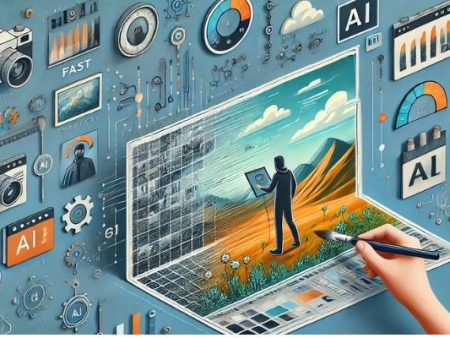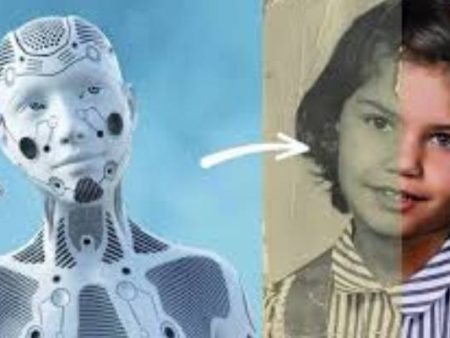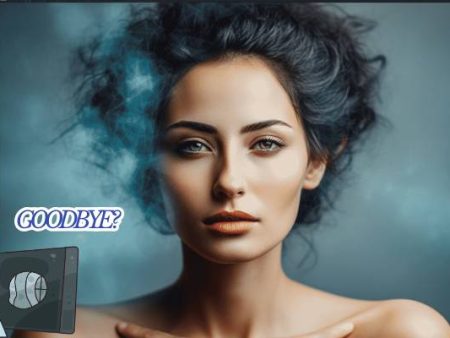If you’d asked me a few years ago whether a portrait created by a machine could feel more real than an actual photograph, I would’ve laughed.
How could an algorithm outdo the authenticity of a camera capturing a moment that really happened?
But here we are, in the middle of the AI boom, and people are not only asking the question—they’re answering “yes.”
It’s unsettling, exciting, and confusing all at once. AI image generation has crossed a threshold where its portraits often seem sharper, more polished, even more “alive” than snapshots of living, breathing people.
And that raises a bigger issue: if the fake feels realer than the real, what does that mean for art, for truth, and for us?
Exploring Role of AI Image
To understand the phenomenon, we need to start with the exploring role of AI image in portraiture.
AI systems like MidJourney, DALL·E, and Stable Diffusion are trained on massive datasets—billions of images of human faces, paintings, digital art, and photography.
The models learn patterns: how light falls across skin, how symmetry influences perception of beauty, how imperfections are distributed in real photographs.
When you prompt the AI—“a candid portrait of a young woman in natural light, freckles visible, 85mm lens effect”—the system doesn’t copy.
It synthesizes, creating a composite from learned data. The result is often startling. Sometimes, the AI-generated face looks better than reality.
Not because it’s more authentic, but because it’s designed to hit every subtle cue we subconsciously equate with “realness.”
The Science Behind the Illusion
This isn’t just speculation. A 2022 study published in PNAS found that people often rated AI-generated faces as more trustworthy and realistic than actual photographs (source).
Why? Because human perception isn’t purely rational. Our brains are wired to respond to certain cues—symmetry, clarity, eye contact—that AI can exaggerate just enough to trick us.
Where real photography might capture blemishes, awkward angles, or imperfect lighting, AI “perfects” the imperfections, leaving us with something that feels hyper-real.
It’s like comparing a studio-recorded track to a live performance. The polish can sometimes feel richer than the raw experience—until you realize what’s missing.
Debate on AI-Powered Retouching: Goodbye To…
This naturally leads us to the debate on AI-powered retouching: goodbye to the old ways of editing.
For years, photographers relied on Photoshop to retouch portraits—softening wrinkles, removing blemishes, adjusting colors.
Now, AI can generate an entirely new portrait where retouching is built in from the start. There’s no “before and after.” It’s all “after.”
So here’s the question: do we want portraits that flatter us endlessly, or ones that reflect us truthfully? It’s not just about vanity—it’s about memory, identity, and trust.
Imagine wedding photos where the bride and groom don’t look like themselves, but like slightly AI-enhanced versions—ageless, flawless, perfect.
What happens decades later when children and grandchildren look back? Will they see their family as they really were, or as an algorithm thought they should be?
About for Movies and Games
Now, before we get too sentimental, let’s acknowledge where this technology shines: about for movies and games.
Entertainment industries thrive on illusion. In video games, hyper-realistic characters are part of immersion. In films, digital doubles often replace actors in stunts or CGI-heavy scenes.
AI-generated portraits and faces can save studios time and money, while also unlocking creative potential that would be impossible with real actors alone.
The uncanny valley—the awkwardness of digital humans—hasn’t disappeared, but it’s shrinking fast.
AI faces can now populate crowds, fill in background characters, or even act as the basis for main protagonists. For industries where “real enough” is all that matters, AI portraits may dominate.
Issues With Models to AI-Designed Outfits
The fashion industry is another fascinating example. We’ve already seen issues with models to AI-designed outfits emerge as brands experiment with fully AI-generated campaigns.
Why hire models, photographers, and makeup artists when an AI can design an outfit, generate a model to wear it, and produce a photoshoot—all in minutes? It sounds efficient, but it raises profound questions.
- Authenticity: Real models bring charisma, individuality, and human presence. AI models are flawless but lifeless.
- Labor: What happens to careers built around modeling, styling, or photography?
- Trust: When consumers see an outfit on an AI model, does it actually reflect how it will look on real human bodies?
Fashion has always played with fantasy, but there’s a line between aspiration and deception. AI risks crossing it.
Why AI Portraits Feel So Convincing
AI portraits succeed because they’re crafted to please our subconscious biases. They:
- Smooth imperfections: Pores, blemishes, stray hairs vanish.
- Enhance features: Eyes appear brighter, smiles more symmetrical, skin more even.
- Adjust lighting perfectly: No shadows in the “wrong” place, no awkward highlights.
In short, AI gives us what we want to see, not necessarily what is. That’s powerful but dangerous.
Because when portraits feel more real than reality, we start questioning what “real” even means.
The Ethical Quicksand
This all comes with risks that can’t be ignored:
- Misinformation: AI portraits can be used to spread fake identities, deepfakes, or propaganda.
- Consent: Real people’s faces may be used to train AI without their knowledge.
- Psychological Effects: If we start preferring AI portraits to real photos, what does that do to our self-esteem, our relationships, our expectations of beauty?
A photo has always carried weight because it was evidence—proof of presence, proof of reality. AI muddies that water.
The Human Element: Why “Real” Still Matters
Here’s where I get personal. As dazzling as AI portraits are, I still find myself drawn back to real photos. Not because they’re sharper or prettier, but because they hold a story AI can’t replicate.
A candid laugh, a tear in someone’s eye, a wrinkle earned over decades—those moments can’t be prompted. They have to be lived. And that’s the difference AI can’t touch: lived experience.
Maybe AI portraits are “better looking,” but they’ll never be memories.
Where Do We Go From Here?
So, will AI-generated portraits replace photography? Not entirely. Here’s what I think:
- In entertainment (movies, games, ads): AI will dominate. Efficiency and polish win here.
- In fashion campaigns: Expect hybrid use—AI for speed, humans for authenticity.
- In personal memory-making (weddings, family albums): Human photography remains irreplaceable. The flaws are what make it precious.
What’s needed is balance. We shouldn’t reject AI outright, but we shouldn’t surrender to it either.
Conclusion: Realer Than Real Isn’t Always Better
So, are AI-generated portraits more “real” than real photos? In some ways, yes—they’re engineered to satisfy our subconscious cravings for perfection.
But in deeper, more meaningful ways, no. They lack history, context, and the messy, imperfect beauty of actual lived moments.
The danger isn’t that AI will outdo photography—it’s that we might forget why we valued photography in the first place. Not for its polish, but for its truth.
In the end, the real challenge isn’t whether AI portraits look realer than real. It’s whether we’ll still choose the imperfect truth of photography over the seductive fantasy of perfection.


